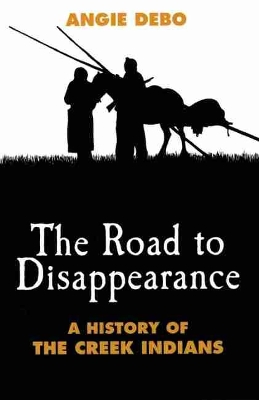The Civilization of the American Indian
3 total works
Yet the surrender that day was not the end of the story of the Apaches associated with Geronimo. Besides his small band, 394 of his tribesmen, including his wife and children, were rounded up, loaded into railroad cars, and shipped to Florida. For more than twenty years Geronimo's people were kept in captivity at Fort Pickens, Florida; Mount Vernon Barracks, Alabama; and finally Fort Sill, Oklahoma. They never gave up hope of returning to their mountain home in Arizona and New Mexico, even as their numbers were reduced by starvation and disease and their children were taken from them to be sent to the Carlisle Indian School in Pennsylvania.
Their reputation as warriors and diplomats, during the eighteenth and early nineteenth centuries, extended to the most distant reaches of the Indian country. Secure in their careless strength, friendly toward the white man until his encroachment made them resentful and desperate, they learned that they had no guile to match broken promises, and no disciplined courage to provide unity against white ruthlessness. Broken, dissembled, and their ranks depleted by the Creek and Seminole wars, they were subjected to that shameful and tragic removal which forced all the Five Civilized Tribes to a new home in the untried wilderness west of the Mississippi.
There, when they found the land good, they revitalized their shattered tribal institutions and rebuilt them upon the pattern of the American constitutional republic. But contentment again was short-lived as they were encircled by the encroaching white man with his hunger for land, his herds of cattle, and his desire for lumber, minerals, and railway concessions. They were faced, moreover, with internal political strife, and split by the sectionalism of the Civil War. Yet, they still survived in native steadfastness-a trait which is characteristic of the Creek-until the final denouement produced by the Dawes Act.
In The Road to Disappearance, Miss Debo tells for the first time the full Creek story from its vague anthropological beginnings to the loss by the tribe of independent political identity, when during the first decade of this century the lands of the Five Civilized Tribes were divided into severalty ownership. Her book is an absorbing narrative of a minority people, clinging against all odds to native custom, language, and institution. It is the chronicle of the internal life of the tribe - the structure of Creek society - with its folkways, religious beliefs, politics, wars, privations, and persecutions. Miss Debo's research has divulged many new sources of information, and her history of the Creeks since the Civil War is a special contribution because that period has been largely neglected by the historians of the American Indian.
""The vitality of our race still persists,"" said a Creek orator. ""We have not lived for naught.... We have given to the European people on this continent our thought forces-the best blood of our ancestors having intermingled with that of their best statesmen and leading citizens. We made ourselves an indestructible element in their national history. We have shown that what they believed were arid and desert places were habitable and capable of sustaining millions of people.... The race that has rendered this service to the other nations of mankind cannot utterly perish.""
While the political, social, and economic customs of the Choctaws were closely circumscribed, the thread of Choctaw history was at all times closely interwoven witht he larger fabric of American history as a whole. Choctaw law was a curious combination of ancient tribal custom and Anglo-American legal practice; Choctaw churches and schools were copied almost wholly from the white man's society; and Choctaw economic institutions represented an attempt to adjust the customs of tribal control of the land to the white system of individual ownership.

